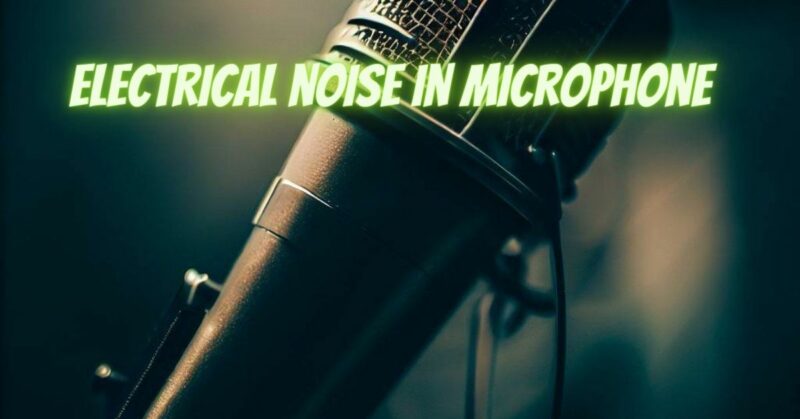Electrical noise in microphones can be a significant challenge, often resulting in unwanted buzzing, humming, or crackling sounds that compromise the audio quality of your recordings or live performances. This type of noise is typically caused by various electrical interferences and can be frustrating to deal with. Understanding the common sources of electrical noise and implementing effective solutions is essential to achieve clean and professional audio. In this article, we will explore the causes of electrical noise in microphones and provide practical tips to help you minimize or eliminate it.
- Check Power and Grounding: Ensure that your audio equipment, including the microphone, audio interface, mixer, and other connected devices, is properly grounded. Use grounded power outlets and consider using a power conditioner or surge protector to filter out electrical noise. Avoid running power cables parallel to audio cables to minimize the risk of interference.
- Separate Signal and Power Cables: Keep audio cables, especially microphone cables, separated from power cables to minimize electrical interference. Crossed or tangled cables can act as antennas, picking up electromagnetic interference (EMI) and introducing noise into the microphone signal. Keep a reasonable distance between audio cables and power cables, and consider using cable management solutions to keep them organized.
- Eliminate Nearby Electrical Devices: Keep the microphone away from devices that emit electrical noise, such as fluorescent lights, computer monitors, Wi-Fi routers, or power supplies. These devices can introduce electromagnetic interference and cause noise in the microphone signal. Creating distance between the microphone and these devices can significantly reduce the chance of interference.
- Use Balanced Microphone Cables: Balanced microphone cables, such as XLR cables, are designed to reject common-mode noise and interference. They have three conductors (positive, negative, and ground) and help minimize noise by canceling out any interference picked up along the cable. Ensure that your microphone and audio interface or mixer have balanced inputs and outputs, and use balanced cables for optimal noise rejection.
- Test Different Microphone and Cable Combinations: Sometimes, certain microphone and cable combinations can be more susceptible to electrical noise than others. If you have multiple microphones and cables available, experiment with different combinations to identify if a specific microphone or cable is causing the noise. This process of elimination can help pinpoint the source of the problem and guide you towards finding a suitable solution.
- Consider Using Ground Lift or Isolation Techniques: In some cases, ground loops or improper grounding can contribute to electrical noise. Using a ground lift adapter or ground loop isolator can help break the loop and eliminate the noise caused by ground-related issues. These devices interrupt the ground connection between audio equipment and can be effective in reducing electrical noise.
- Employ Noise Reduction Tools: Digital audio workstations (DAWs) and audio editing software often offer noise reduction plugins or tools that can help reduce electrical noise in post-production. These tools analyze the noise profile and apply algorithms to minimize the unwanted noise while preserving the desired audio signal. Experiment with noise reduction settings to achieve a balance between noise removal and maintaining audio quality.
Conclusion:
Electrical noise in microphones can be a frustrating obstacle, but by implementing these tips and techniques, you can effectively minimize or eliminate the unwanted noise. Check power and grounding, separate signal and power cables, eliminate nearby electrical devices, use balanced microphone cables, test different microphone and cable combinations, consider ground lift or isolation techniques, and utilize noise reduction tools. Remember to approach troubleshooting systematically and be patient in finding the right solution for your specific setup. With diligence and attention to detail, you can achieve clean and noise-free audio recordings and performances.


